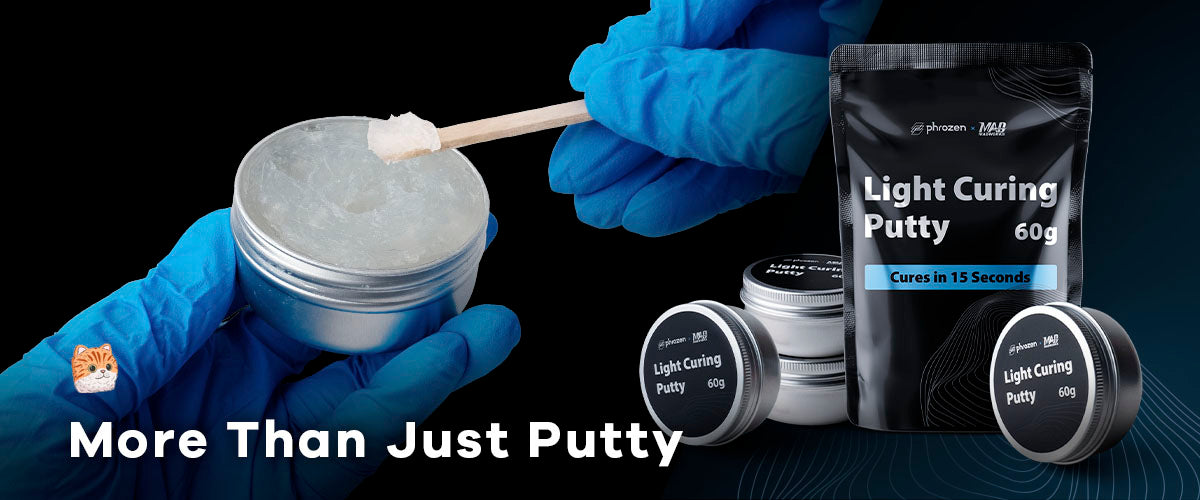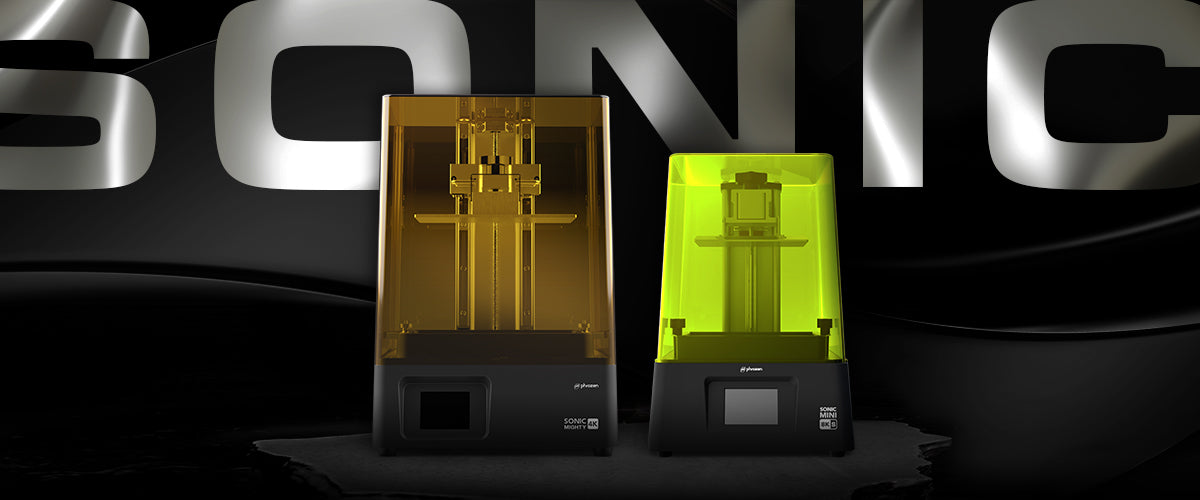Maybe you've heard about our Light Curing Putty, or maybe not. But if you've been looking for a green stuff alternative, then make sure to keep reading!
This time, one of our group expert—Dennys Wang, will put our Light Curing Putty to the test.
But What Is Light Curing Putty?

As the name mentioned, it's a putty that cures rapidly under UV light exposure. It has a gel-like texture similar to vaseline and is super easy to use.
If you are familiar with products like green stuff, the Light Curing Putty is a great alternative that cures in seconds, allowing you to continue working with your resin printed models without missing a beat. It's a great material for filling in drain holes and restoring broken 3D printed parts. What's more? It's also easy to sand and paint when it's fully cured, so it won't leave any unwanted marks on your resin printed models.
First Impression of the Light Curing Putty

Tear the plastic packaging of the putty on the designated mark so you won't damage the instruction and notice on the back of the packaging. Inside, you'll find one can of Light Curing Putty and a wooden stick to apply the putty.
Wear gloves when handling the putty and avoid contact with your skin. Gently open the putty can, and you'll find a divider and a can full to the brim with putty. With this amount of putty, a can will last a long time, even though you are 3D printing regularly.
Testing the Putty
Fill Drain Holes
One of the most essential uses of the Light Curing Putty is to cover the drain holes that were created before printing. Although some people find it okay to leave the hole uncovered, some would argue that filling all the holes is important for a complete print.

Dennys tested how the putty works by applying a small amount of putty to his fully cured 3D models. After just a few seconds of curing, the putty has completely dry and safe to touch. According to Dennys, it's definitely the fastest work he has ever done to fill in a drain hole.
In fact, it dries so fast that Dennys needs to try it again on another hole. This time, he tries to do it in a couple layers and uses a little bit of alcohol to smooth out and remove the excess putty before curing. The final results are really smooth. There is no gap, and it works nicely. Dennys also like that the putty doesn't cause extra thickness that will change the fits of the model.
Endurance Test
Dennys also did some fun tests to check this putty's strength and quality.
- Rolling and Breaking

Dennys roll out a small amount of Light Curing Putty as thin as possible and cure it. Then, he snaps it into two. According to Dennys, the putty has no flex and breaks immediately upon bending.
- Joining Resin Parts
Dennys used the Light Curing Putty to connect two pieces of resin 3D models together to simulate a restoration of broken 3D printed parts. It could also simulate bad distortions in your prints that end up in your parts not connecting well.

According to Dennys, the putty glues the resin parts really well. First, he attempted to pull the two pieces apart with all his strength to no avail. It feels like the pieces are welded together! Next, he tried bending the piece. It created a little bend, but it took his full strength to successfully snap it apart. Overall, it creates an incredibly strong bond between the putty and the resin.
Do You Need the Light Curing Putty?

Of course there are other ways to cover the drain hole or connect broken 3D printed parts.
Epoxy clay or air dry clay is another green stuff alternative that is often utilized by the 3D printing community.
It works well to cover holes but will take quite a while before it fully dries, which means putting your work on hold.
Another popular method is to mix the resin you use for printing with baking soda. This will allow your print to have a seamless finish and you can cure it with UV lights to dry it immediately. The downside is that it could be pretty messy, and you need to carefully ratio the amount you put in the holes before curing, as it won't properly cure if you apply it too thick. With that said, this is not Dennys' preferred way to fill in drain holes.
So, do you need the Light Curing Putty? If you don't want to wait for your models to dry before continuing your work and you hate the mess of resin drips all around your workspace, you'll definitely love the Light Curing Putty. It bonds tightly with very fast working time, so you wouldn't miss a beat.
And if you ask Dennys, he definitely likes the products!
———
Dennys Wang is an entrepreneur with his own 3D printing business. He makes lots of things with his 3D printers, including custom action figures. He also owns a Youtube channel where he shares in-depth reviews about the latest 3D printing technology, resin 3D printing tips and tricks, as well as painting tutorials. You can also join his Patreon to get special monthly releases of STL miniatures.



